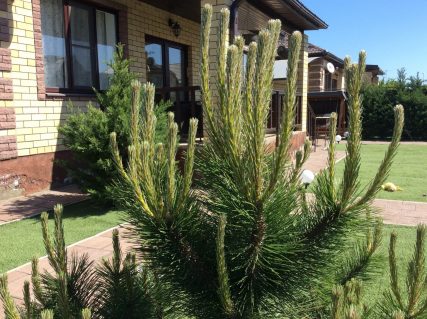An excellent landscaper and air purifier are conifers, including pine crops. In the natural habitat, the genus Pine has about 130 species, among which the black pine is especially popular.
Material Content:
Features and description of black pine
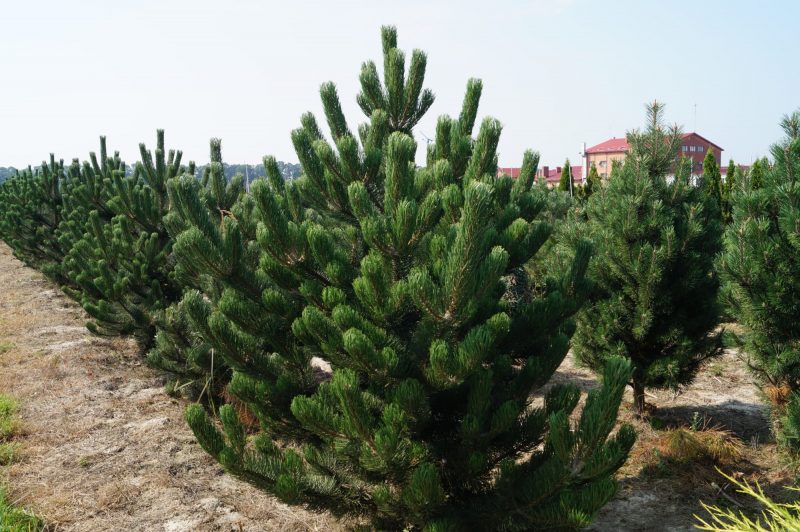
Black pine due to its peculiarity of growth on rocky areas was called “Pinus nigra”. The species is represented by medium-tall trees with a height of up to 55 m and an average life expectancy of 700 years. The shape of the crown changes with the growth of cultures: the pyramidal shape in adulthood takes the form of an umbrella, consisting of spreading branches. The bark is painted in black gray. For 4-5 years, bright green needles hold tight to graceful shoots. Elliptical brown cones form in place of flowers observed in the second half of spring. A beautiful evergreen tree, growing at an altitude of 1,500 m above sea level, feels great in an urban environment.
Common types and varieties
A typical species includes about 40 varieties differing in plant height, crown shape and needles color.
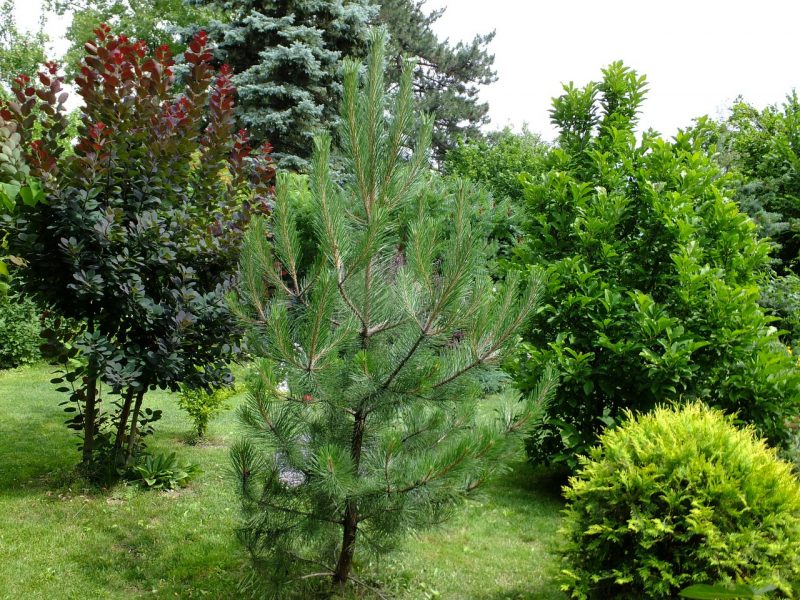
Among the most popular are:
- Black pine Pyramidilis - an evergreen tree up to 8 m high has a hard needles of dark green color. The diameter of the crown is 3 m. A representative of the species grows well in gassed areas.
- Nana is a slowly growing pine tree up to 3 m high, which is often used in landscape design.
- Globose is a miniature variety with needles of two types that differ in age.Young needles, appearing in the middle of the summer season, reach half the length of last year, thereby forming decorative brushes.
- Spielberg is a coniferous shrub that does not exceed 1 m in height, with a conical crown consisting of densely growing branches.
- Black pine Green Tower - an evergreen representative of the species with a columnar crown, which is formed by vertically growing shoots. The variety is recommended for decoration of small household plots and miniature gardens.
How the coniferous plant Pinus nigra breeds
Due to the poor rooting of cuttings, the only productive way of propagating black pine is generative, in which seed is used, extracted from the cones of the second year or purchased in a specialized store.
The phased instructions for the procedure are as follows:
- Seeds are stratified by being in the vegetable section of the refrigerator for 2 months.
- Before sowing, a box for seedlings is prepared with drainage holes at the bottom, which is disinfected with a strong solution of manganese or fungicide.
- The tank is filled with a nutritious soil mixture with a loose structure of peat and sand, which is also subject to disinfection by calcining it in the oven for 20 minutes.
- Seeds are distributed on the surface of the substrate and slightly pressed.
- Crops are kept at a moderate temperature of 18-23 ° C and in moistened soil.
- After emergence, after 2-3 months, the seedlings dive into separate pots.
- Planting seedlings from seeds in open ground is carried out only the next year.
Preparation and planting of black pine in the open ground
In order for a noble tree with excellent decorative qualities to take root and fully develop, delighting its owners with coniferous aroma and beauty, it is necessary to responsibly approach the planting work.
Selection of planting material
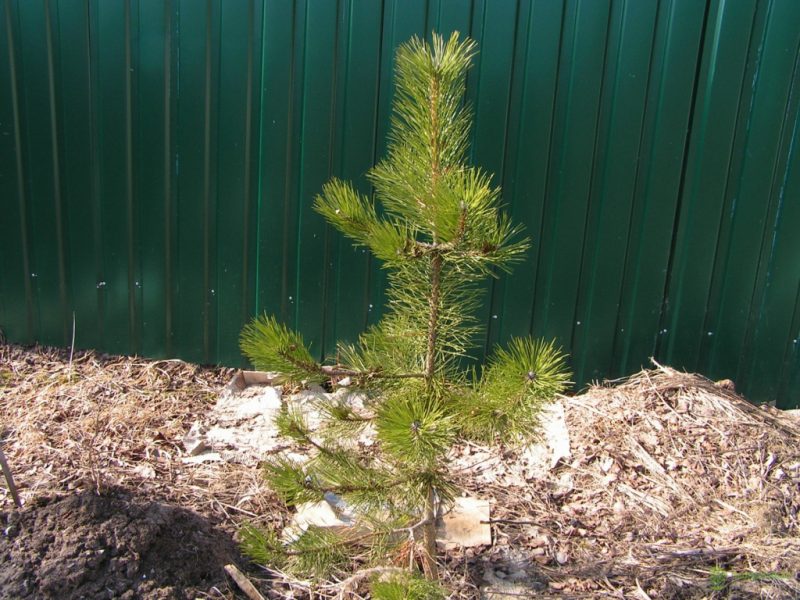
If the gardener decided to purchase ready-made seedlings, then the purchase should be made in proven nurseries. Planting material must be of high quality and have a closed root system. In this case, it is necessary to determine the unit, which is zoned in the agro-climatic conditions of the region and harmoniously fits into the site design.
Location and soil requirements
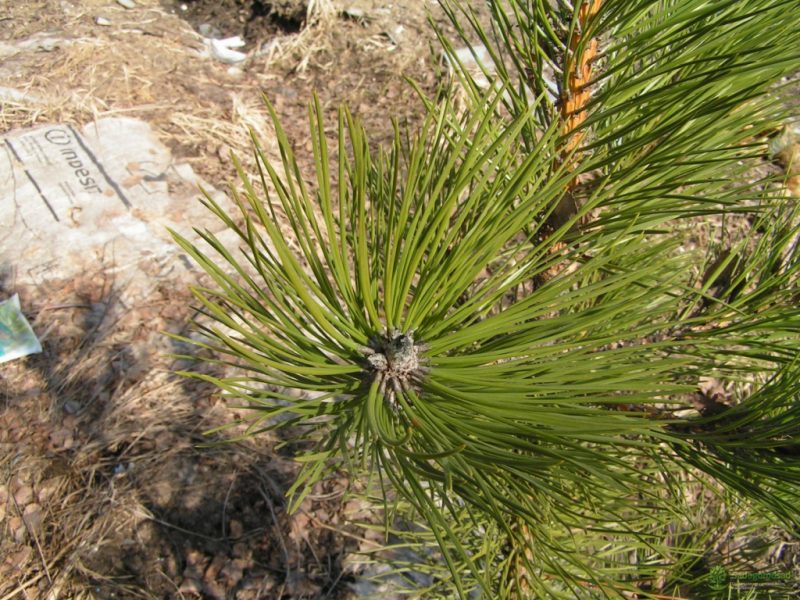
For black pine, sunny areas protected from drafts are selected. If the variety is tall, you should look for an open and large area. The composition of soils is not demanding. and perfectly develops on the drained soil with alkaline reaction. The preparation of the site is recommended to be carried out in advance by digging, removing the roots of weeds and introducing nitrogen-containing agrochemicals.
Landing technology
In mid spring or early fall:
- At the selected site, a landing pit is dug, the dimensions of which are calculated by the formula: parameters of the root system of the seedling + 20 cm of clearance.
- A drainage layer of broken bricks is placed at the bottom, which is slightly covered by the extracted soil.
- Then water pours into the pit, after drying of which a sapling with spread roots is placed on a thin earth layer.
- The pine tree is buried so that the root neck remains above ground level.
- The trunk circle is compacted, slightly moistened and mulched with sawdust or peat.
Secrets and nuances of leaving
To grow a green beauty, you must follow the agricultural techniques for growing black pine.
Watering

Black pine is a drought-tolerant plant with a powerful root stem, on which dampness and stagnation of moisture have a more detrimental effect. Additional watering is carried out only once during a long dry period or in autumn to accumulate a moisture supply so that wintering is successful.
Soil treatment
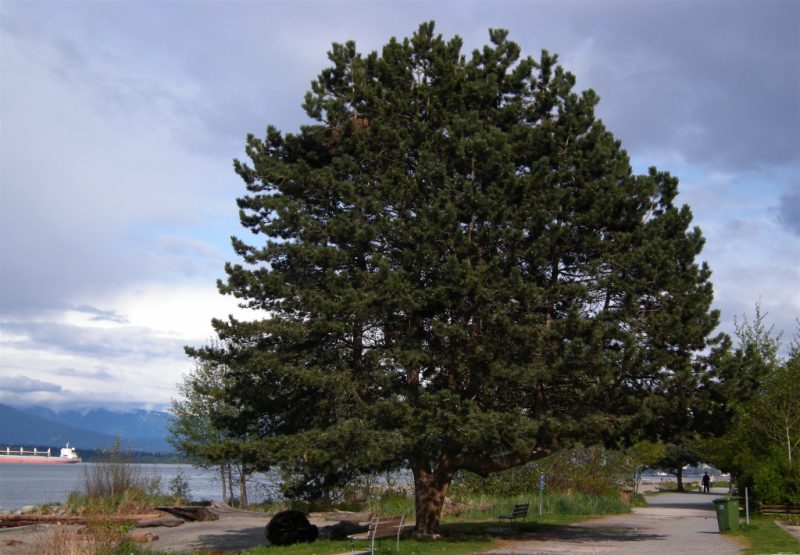
To ensure loosening of the soil, it is recommended to loosen it sometimes.In a couple of years, fallen needles will appear as a layer of mulch, which also improves soil fertility in the near-trunk circle.
Top dressing
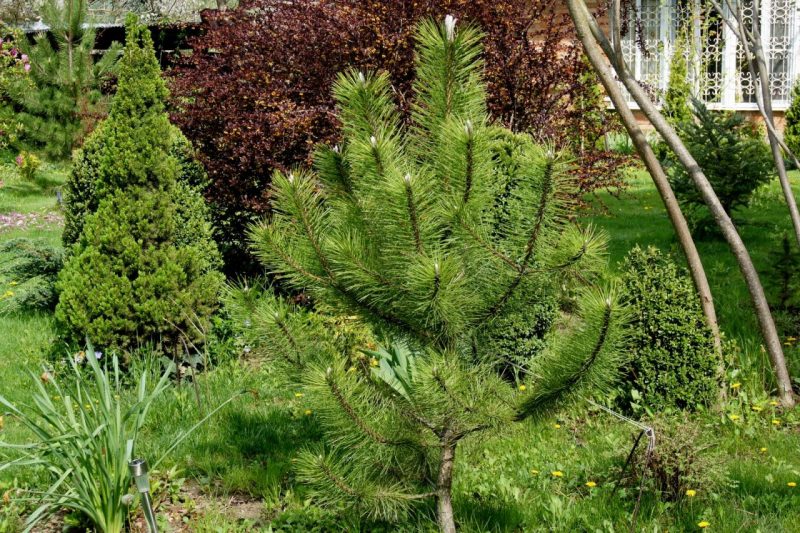
Only young specimens need additional nutrition until a dense coniferous litter has been formed. For root top dressing, liquid mineral fertilizers are used.
Pruning
In black pine, a beautiful crown is formed naturally. However, for sanitary purposes, it is recommended to remove damaged, dried and diseased branches every spring.
Preparing for the winter cold
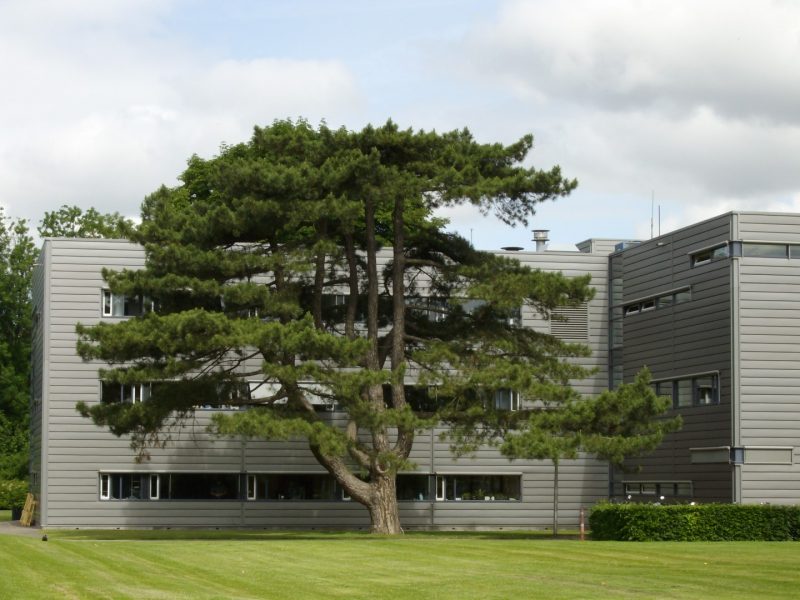
A frost-resistant plant in adulthood does not need protection from the cold. However, in the early stages of development, seedlings can suffer from the wind and the rays of the spring sun, from which they will be protected by shelter with spruce branches or wrapped in burlap.
Use in landscape design
The typical species and varieties of black pine are often used for landscaping private estates and squares:
- Tall representatives, easily tolerating the pollution of city air, look spectacular in solitary landings against a green lawn.
- With the help of medium and low representatives, coniferous compositions are created, harmoniously combined with thuja and deciduous shrubs.
- Low-growing varieties of conifers are decorated with alpine hills, rockeries and round flower beds.
Thus, if the size of the garden allows you to grow black pine, then you should definitely get a suitable coniferous variety, which with minimal care will fill the air with oxygen, giving great aesthetic pleasure.




